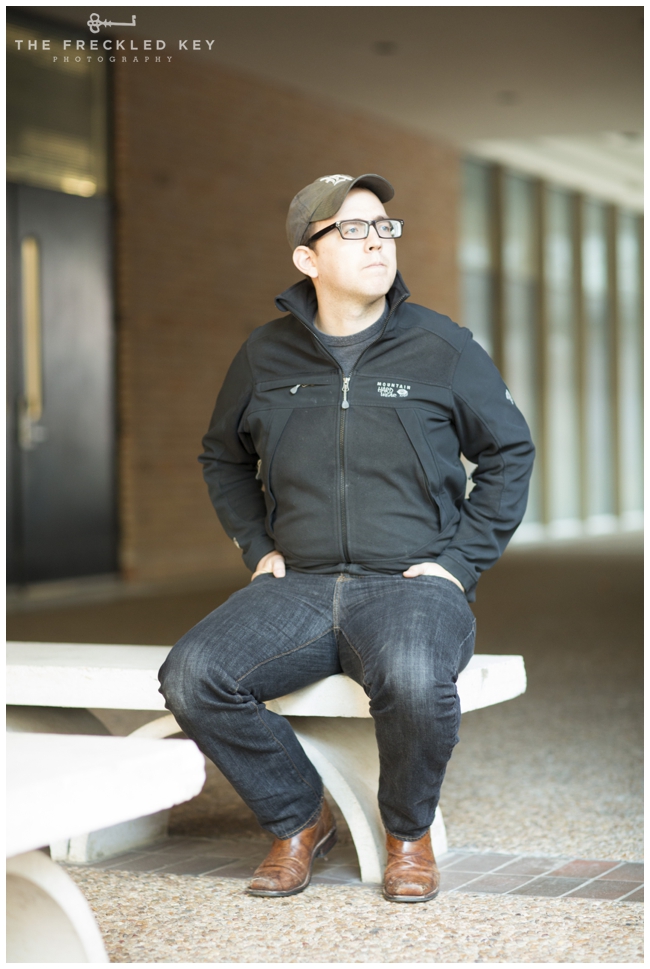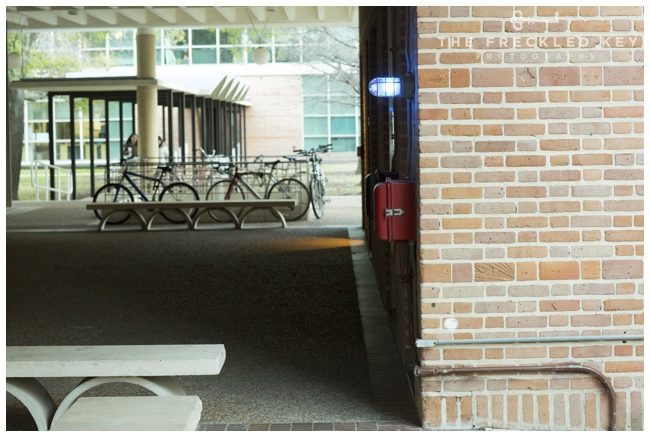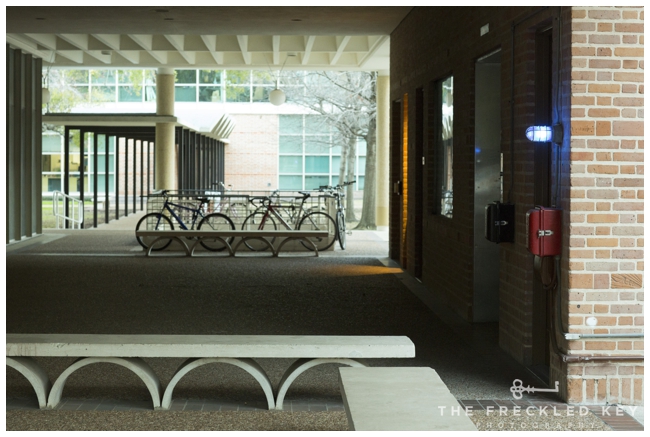 Image Info: Camera – Canon 5D Mark III, Lens – Canon 85mm f/1.2L, Camera Setting – M (Manual), Aperture – f2.0, Shutter Speed – 1/100, ISO – 1250, White Balance – Custom.
Image Info: Camera – Canon 5D Mark III, Lens – Canon 85mm f/1.2L, Camera Setting – M (Manual), Aperture – f2.0, Shutter Speed – 1/100, ISO – 1250, White Balance – Custom.
After finding the perfect light for an image – ideally an hour to an hour and half before sunset (“Golden Hour“) for a portrait shot – I quickly begin composing the image in my mind. What about this person or persons makes them unique? What composition/pose tells a story about them? Reflects who they are? How can I best fit my subject within the light and location to tell the best narrative? What about the location is worth including in that narrative? What within the location should be eliminated from the narrative?
All of these things (and more) play into creating a good photographic composition. My sweet hubby, The UNfreckled Key, volunteered to be my model for this post – thank you, dear!
I took this image at about 5:15 p.m. (an hour before sunset) this evening as Scott and I were walking across Rice University’s campus in route to pick up something from his studio. The light was perfect, the location told a story, a spot that he passes while walking to his studio everyday.
But, as you can see from the images below, the location is a bit visually “cluttered”:
Take note of the emergency telephone, the emergency blue light, the exposed piping, the bicycles, the variety of lines, and the strange yellow light coming from a doorway… At first glance, this is not a great spot to take a photo. But, despite the junk, I noticed that on the far right corner of the concrete bench in the foreground there was a spot, if only 24 inches, of amazing light! And that’s what I look for first when I’m looking to photograph a portrait – great light (I will do a post on what “great light” means to me for outdoor portraits in another post – this is about composition 😉 )!
Now let’s break this down.
When I take a photo, any photo, I do my darndest to capture the best image straight-out-of-camera as possible, which in part means that I compose the shot exactly how I want it while I’m in the moment, rather than wasting time cropping an image in post-processing later. When we arrived at the location on our walk, as I mentioned before, I was immediately drawn to that spot of light. I instructed Scott to go have a seat on the bench and “act normal”. This prompt immediately allowed him to relax. Rather than attempt to pose, he did what he always does when he sits down: he stuck his hands in his pockets, propped his heals up, and started biting his lower lip.
My subject in place, I positioned myself off to the right side of the scene, squatted down, and angled my body towards Scott, which eliminated all of the “clutter” from the image (red telephone, blue light, yellow glow, pipes, bikes, etc.), leaving just my subject, the bench, some clean vertical lines created by the windows in the background, and a narrative of my love.
When composing an image, consider the story as a whole – what location is meaningful to the subject? What pose will allow the subject to be themselves? How can you creatively incorporate or eliminate the “junk” within a location to enhance the story of the image?
Explore composition this weekend! Tell a story with your camera.
Compose and click,
HK



Leave a Reply